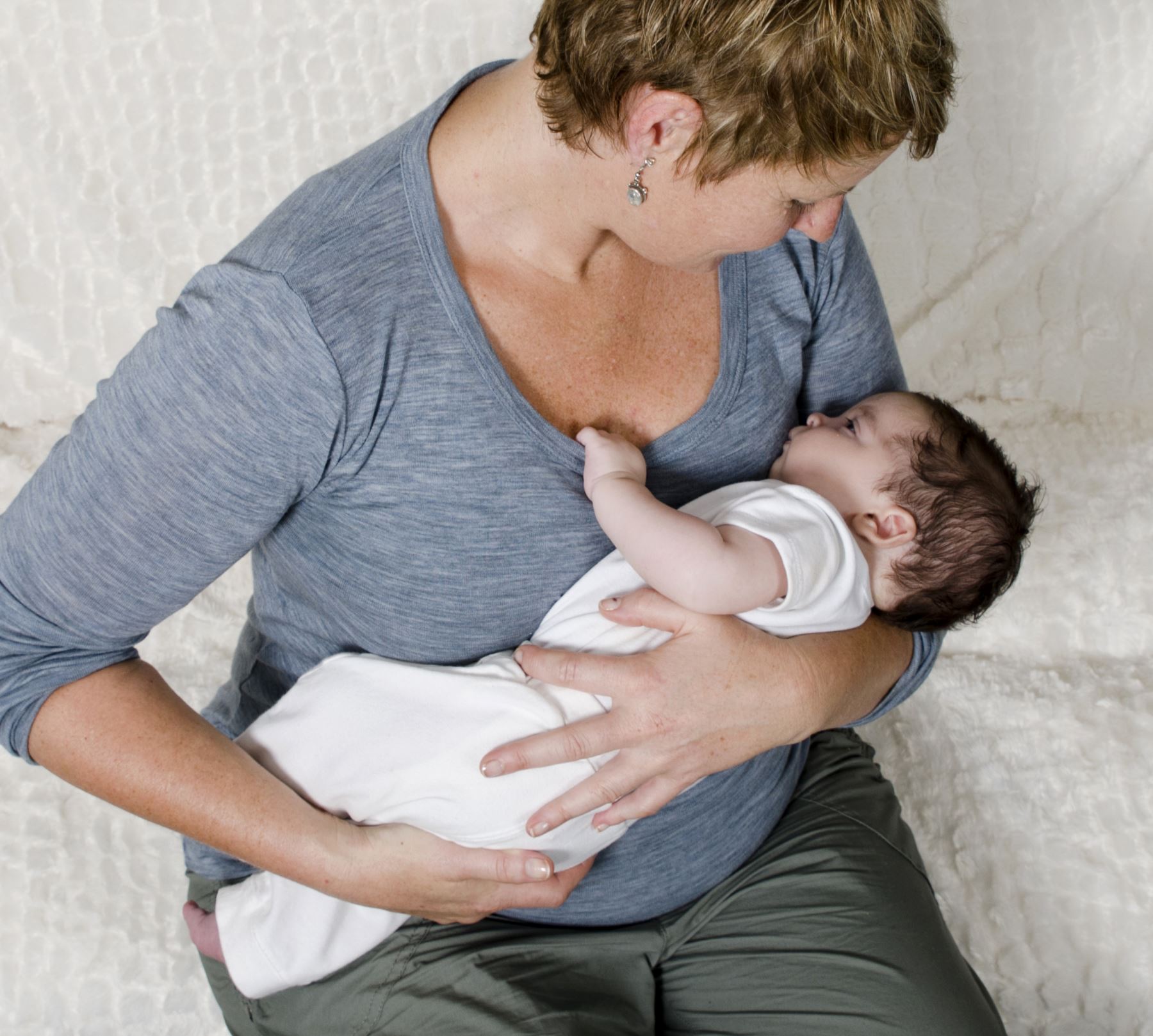Breastfeeding - 10 steps to a healthy latch

An unfavourable latch can cause problems with demand and supply, weight gain and baby's increased wind as well as creating sore nipples. It is therefore very important to maintain favourable latching techniques at every feed for the duration of breast or bottle feeding.
- lie your baby into the Nestle on the side they will be feeding from for around five minutes before the feed or until relaxed, use a pacifier to stimulate faster relaxation. This allows any retained air to find a comfortable position in the abdomen before feeding, which minimises one of the common signs of overload — baby continually coming on and off the nipple as they react to digestive movement. By using the Nestle you have a better chance of creating steady sucking and less intake of air during the feed. Do the same if bottle feeding, laying your baby horizontally before the feed.

- make sure you are sitting comfortably with good back support and relaxed shoulders — it can be helpful to sit on cushions
- Make sure baby is awake and alert for the feed
- Baby’s torso is elongated and curved around Mum, unless bubs is still in the foetal position in the early days after birth
- Have your hand holding the lower part of the head to enable the latch
The basics for good breast latching is to:
- Place baby nose to nipple — this automatically gets baby craning their neck slightly to allow their mouth to reach your nipple and enable the tongue to drop down
- rub your nipple in a downwards motion on your baby's bottom lip wait until their innate reflex, brought about by your rubbing, opens the mouth wide and drops the tongue to the bottom of the mouth
- place baby on for a feed by moving them toward you, do not take your nipple to them
- Once latched check the bottom lip is splayed down and if not, pull it down with your little finger
- if baby is not latched on properly, then unlatch and repeat.
Last Updated: 14 October 2016



